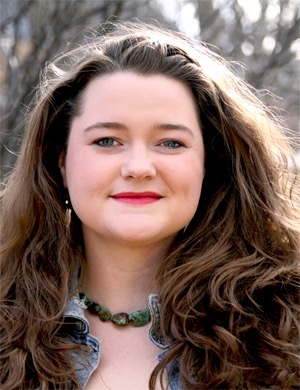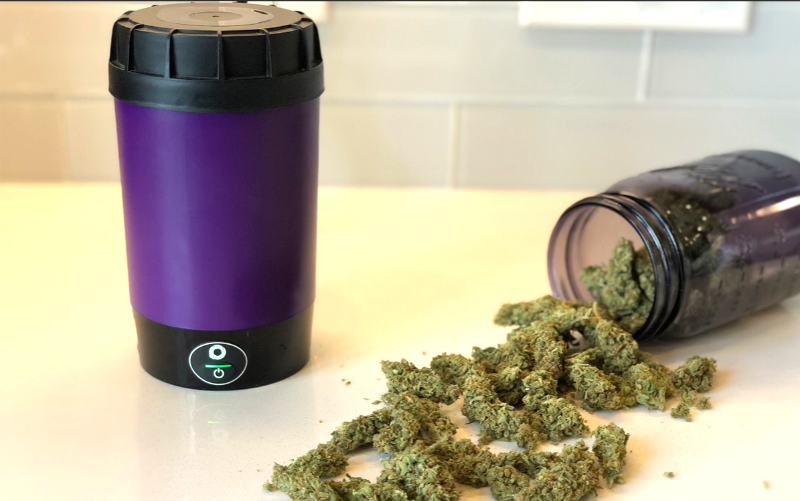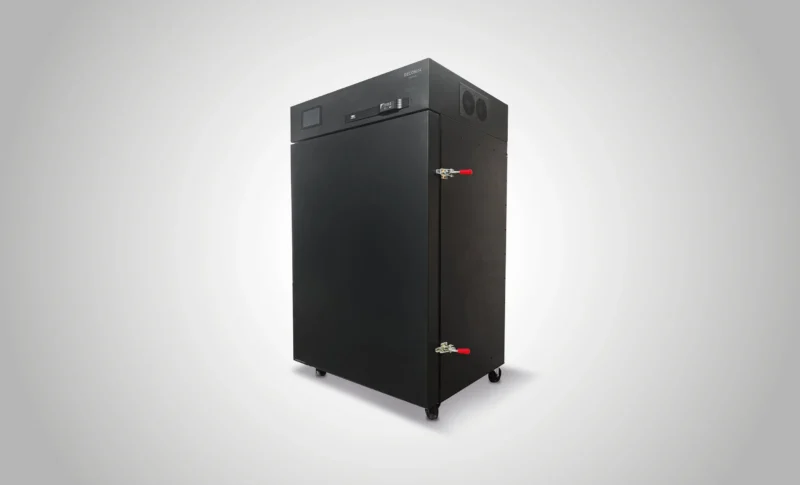“Bringing cannabis to the masses on the technology side, on the political side, and on the opportunity side, that’s really what we stand for.” – Founder and President of Ardent Cannabis Shanel Lindsay
Lindsay’s dedication to the cannabis community stems from her struggle with an ovarian cyst, an affliction which sparked her interest in medical marijuana. Since her early days making cannabutter in a Crock-Pot, Lindsay has taken her interest and turned it into a passion, using her knowledge of the substance and her extensive research into potency and efficacy to create a ground-breaking product.
Lindsay invented the NOVA decarboxylator, a THC activator and infuser capable of deriving the maximum amount of THC from any raw flower. Her creation is doing more than helping people save money on their pot, it’s helping medical cannabis patients create precision doses for their treatment plans.
With the ability to fully activate the THC in even low-quality cannabis, Lindsay is giving users the ability to derive the most value from their product. Consumers can then infuse any product, giving them the ability to create low-cost, high-potency concoctions of all variety within their own home.
We spoke with Lindsay to learn more about her journey to becoming a thought-leader in the cannabis space and discover how her product is helping millions of people create low-cost medicine.
Cannabis & Tech Today: How does the NOVA decarboxylator help people to create infused products at home?
Shanel Lindsay: We just actually did a big release of data showing that the device is not only a perfect decarboxylator, but it also does very, very efficient infusions for butters and oils. We were getting a ton of questions about that for people, because, similar to decarboxylation, the infusion process is just rife with myth and misinformation and really, surprisingly, very, very little data when it comes to actual dosing with the infused product.
What we found is that the homespun methods, and all the machines that are currently out on the market, require a ton of cannabis to start. A lot of oil, too. I think the minimum is like two cups of oil to begin, and seven grams of cannabis up to an entire ounce of cannabis. There’s no actual data to tell people, “Okay, well, this is how much you can expect to get out of it. This is the percentage of infusion that you’re getting.” So, for the last couple of years, we actually have been getting a lot of these questions and really focusing on the fact that, after you use the material in the decarboxylator, you can just immediately eat it.
C&T Today: How are people responding to the idea of eating decarboxylated cannabis flower?
SL: I think that really changes the way that a lot of people even think about using cannabis, right? Because at first they’re like, “Oh, you have to eat cannabis?” And it kind of turns them off a little, but when they realize that it is just a tiny sprinkle you’re putting in, you’re not having any cannabis taste whatsoever, and they’re actually able to get a better solution than if they were using a butter or oil, then it starts to change their mind when they see how simple it is, whether they’re just putting it in stuff or putting it in a capsule or incorporating it into a larger meal.
C&T Today: Patients can obtain the desired effect from simply eating flower, so why is Ardent focused on educating people about infused products?
SL: There is always going to be that segment of people who want the butter and oil. Then when you’re talking about making other cannabis products like facial toners, lotions, or other things like that, it’s not really practical to have the ground flower material in the product. So the next frontier was really cracking this code when it came to infusing cannabis into oil and butter.
We’ve been doing infusion testing with lots of different oils, with lots of different flower material. All the tests that we did were based on one ounce of oil, which is only like 2 tablespoons of oil, so a very small amount of oil to start. Then we showed people how to just use half a gram of cannabis, and we were able to get over 90 milligrams into the oil with just half a gram of cannabis. Like, that’s less than people could use to roll a joint. So the infusion rates that we were getting on that were anywhere between 80 and 95 percent, using the device.
C&T Today: How were you able to obtain infusion rates as high as 80 or 95 percent?
SL: You need to decarboxylate first, before you infuse. There’s this chronic issue when people are making edibles and products at home, just this lack of decarboxylation. There is a lot of THCA left in these products, which leads to inconsistency in dosing because when they’re eating it, if only 10 milligrams out of 15 is activated, then they’re only getting the effect of a 10-milligram edible.
What people don’t realize, and what we were able to show through this testing, is how, when you actually put cannabis into an oil and then start to heat it, that oil encapsulates the cannabis and really slows down the decarb process and prevents it from happening past a certain point. That’s why it is so important for people to decarboxylate before they begin their infusions. If you look online about this, there’s a ton of misinformation about that particular point.
We are super excited about the NOVA’s infusion capability. It’s almost on the cusp of microdosing, but when you’re talking about half a gram of cannabis making almost 100 milligrams of THC, that’s not a microdose in anybody’s world, but the idea is that you could take just the scraps of what you have left over and be able to make a really potent medicine.
C&T Today: That technology must be especially valuable to medical patients.
SL: We hear that all the time. Insurance doesn’t cover cannabis. Often, especially if they’re using it for cancer or other things like that where they’re using really aggressive, really high amounts of cannabis, they’re struggling to afford it. Where as with the NOVA, we can say “Hey, we were able to get 700 milligrams out of 4 grams into 1 ounce of oil, even more than that if you’re using kief or you’re using concentrate.”
Just showing people that there are just a lot of different options for them. Dispensaries are great, and they’re a great source of really clean flower. But there are many, many people who can’t afford products on dispensary shelves. They really should have the opportunity to grow at home and take that medicine and turn that into really powerful medicine, or be able to just have that variety, and be able to smoke, but then also put a little bit aside to make edibles and try to see if that works for them.
That’s why it’s so important for us to have science behind our work, because there are people that are convinced that it takes a lot, that it’s really expensive, and that you can’t hone in on that efficiency like we’ve been able to do.
C&T Today: What inspired you to create the NOVA decarboxylator?
SL: When my son was born 17 years ago, I was actually still in college. I ended up getting an ovarian cyst and was prescribed a really, really high dose of acetaminophen and other pain medicines, but I was particularly worried about the acetaminophen because it was like, 1,000 milligrams a day to treat this condition. It would make my stomach hurt, but I was also really concerned about liver damage, long term. I had been using cannabis to relax or to study better or just deal with life, but at that point, I decided, “Okay, why don’t I try to use this as a medicine?”

I knew that people were using it in California at that point, because compassionate use had passed at that point. We’re talking about, around 2002 at this time. I thought, “Okay, let me see if I can turn this into a medicine, a topical, an edible, to help with the pain and inflammation from my cyst.” I started just doing research. At that point, when I started getting deeper into it, I was moving from college to law school.
I thought, “I know I can figure out the science of this better.” Because when you first start, you’re just wasting a lot of bud. You’re coming up with this stuff that doesn’t taste good. You don’t know what the dose is, and I started thinking, “Wait a minute. How do I actually try to figure out what’s happening here, how much I’m getting?” I was really frustrated. I was using the Crock-Pot a lot, and I was making a lot of butter. I was having to make a lot at one time, and then I would put it in the freezer or the refrigerator.
So I would be eating this really dank butter and it was kind of like, “God, this is just really not my favorite thing.” The butter was really, really strong in the taste, and I was also starting to eat a lot of extra meals a day because I was having to incorporate this butter into something. I was putting it in oatmeal and other things and I just knew there had to be better choices.
C&T Today: Is that when you first considered turning your decarb research into a viable business?
SL: There wasn’t an opportunity to turn it into a business yet, at that time, because cannabis legalization was way, way far off. So I just became a lawyer, I practiced at a law firm. I worked for the court system as a law clerk, and then I worked for the state for a while as well. Then medical marijuana came to Massachusetts, and it took four years for dispensaries to actually come. The dispensaries were delayed for three or four years, but a laboratory opened up pretty quickly, and that was about a half-hour from my house. That was MCR Laboratories.
I went to MCR and brought my medicine that I had been making. By this time, I had been making medicine for around 10 years, topicals, edibles and everything. I was making it the way people were telling me to do it online. I honed in on what I thought was the best process. There were things out there saying you needed to decarb for 24 hours, and there were things out there saying you needed to decarb for 15 minutes.
C&T Today: How did you refine your process with so much conflicting information floating around?
SL: I honed in on using the Crock-Pot for around two hours. That was my method. It worked well; it was pretty consistent. I went and I took it to the laboratory and I was shocked to see that I was wasting like 35, 40 percent every time.
Not fully decarboxylating, and that was after two hours. So I started doing more tests, and there should be more information out there, but just because cannabis is so illegal there hasn’t really been that focus. That was a mission for me, because all I wanted to do was have a medicine that worked for me. And the whole time it was just sitting there, right in front of me, all this potential THC to turn into all these products, but it was such a difficult process.
It just happened to be that I love cannabis. I love it in all of its different forms, and having the opportunity to go to the laboratory and seeing that even after 10 years, I’m still only getting to 70 percent. Basically, at that time I said, “Okay, I must be doing it wrong.” So I started testing all the other methods out there and trying to make it longer in the Crock-Pot and do all these other things, which of course didn’t work, because the underlying problem was that decarb is very, very, very specific in time and temperature and environment.
Even just being a couple degrees off in the wrong direction is going to either not fully convert, or burn it off, or simultaneously burn it off and not convert it. It’s a very, very finicky process, and what we were able to do is actually, at the lab, hone in on that right exact time and temperature profile to be able to do the full conversion of the THC from the acid form, which, in the acid form, if you’re eating it, obviously it doesn’t connect with your receptors or anything; it needs to be essentially activated.
That’s why there always is heat involved in using cannabis. People are smoking it. They’re baking it in brownies and all these other things, but all of these processes lead to a lot of loss. And again, you’re not going to stop people from smoking, and even when they decarboxylate, they can smoke and they’ll get higher from it because there’s more THC going into the bloodstream. There are all these little pieces of science that, if people understand, they can use and modulate their cannabis use to really fit their needs.
So I started to see that there was going to be a lack of adoption of cannabis if there were not easy tools for people to use, because they would try it and they would make a medicine that was ineffective. So sometimes they would think, “Oh, cannabis doesn’t work for me.” Well, no, you destroyed the medicine, so you actually weren’t using the medicine. Again, my aunt, she has MS. I would want her to be able to use cannabis, but she’s not going to go through the whole process that I did to figure it all out. A lot of people, they’re not science geeks about cannabis. They just want to be able to use it quickly and integrate it into their lifestyle.
C&T Today: At this point, you knew there was a problem and you knew decarboxylation was the solution. How did you design the technology to make it accessible to people?
SL: I think that’s what Ardent is all about, providing that education and then, in tandem, providing the tools that just make it foolproof. We went from having this process that was several hours long, using the oven or using the Crock-Pot, not really knowing, smelling up the whole house, to being like a cute little device where you put it in, you press the button, and it does everything for you. It has two sensors and there’s an algorithm, and it controls all that. In order to make the device, I actually pulled a team of experts together, electrical engineers and thermal engineers.
I knew what it needed to do because I had been using the oven and the toaster oven, so I knew it needed to have perfect, even heating. So I went and found this silicone heating company because they had these really flat heaters, so we could make them wrap all the way around. It would be perfectly encapsulating, so then we could control it, and then we put two sensors on it. I knew how I needed to construct it, and then I brought together people that had that technical expertise to write the code and to make the molds for me, and to do all that.
We went on the market in 2016 with beta units. By the end of 2016, we were up with factory production with units, and 2017 was our first full year on the market. We have over 20,000 people who have the device now, and we’ve gotten a huge response from this infusion information. We just shot several videos to really start showing people what’s next after decarb, because we get a lot of people there, but then they’re like, “What’s next?” So we show them, “You can make any butter or oil.”
C&T Today: How does Ardent help people figure out how to use their decarboxylated cannabis?
SL: We actually have these kits now, like a caramel apple kit for fall. It comes with the oil and they just put their decarb material in there, put it back in, it infuses, and they can mix it with the caramel and make their caramel apples. We have everything from fun edibles kits to really serious medical kits for capsules. We have formulations for our capsules, so they’re filled on one side with the excipients that help it absorb in your bloodstream, so we have like a woman’s vitamin, a men’s vitamin, and an immune-booster, then they just open the other side, put the decarb cannabis in, and they have an instant pharmaceutical alternative.
The idea is to make it easy for them. The concept is that, essentially, we give them everything. All they need to add is their cannabis. We have lotion formulations, and again, the whole kit comes with a lotion, and then the little oil, and you just infuse and mix it together.
People are able to have these dispensary-grade products in their own home for a fraction of the price, and just a lot of choice about choosing the strain that works for them. Also, too, like with our lotions and other capsules, we’re adding terpenes into them as well so that people that are in areas where they can’t get quality flower are able to at least supplement that and create the kind of synergies that we’ve seen be really helpful for people treating different symptoms.
C&T Today: How do you envision the future of cannabis?
SL: We’re trying to reach everybody and trying to see how we can make it easy for people to integrate into their normal life. That’s what we see as the future of cannabis. I like to talk about the utility of cannabis. We make a lot of beauty products, like facial toners that get rid of acne, or just things that would replace what you see in a drugstore. Because right now, I think people think of cannabis as recreational or as serious, serious medical.
I think there’s a real space in the middle for the utility of cannabis as an antifungal, an antiviral, to really be able to see people using it to replace things like Tylenol, etc. For me, I’ve never had to have surgery on my ovarian cyst. I manage it with cannabis only, with the inflammation and the pain that comes pretty cyclically on a monthly basis. When I’m ovulating is when I’ll get a ton of pain there, and then at other times too, like when I’m exercising as well. I manage that completely with cannabis. Then also, last year or earlier this year, there was a big report that came out showing that acetaminophen is the leading cause of one out of every three liver failures in the United States.
When that came out, I was like, “Wow, interesting. I’m glad I didn’t take that route.” Also, in the law field, I saw a lot of women who use alcohol to relax, and a lot of women who use pills, and I’ve seen it really have a very negative impact on a lot of women’s lives. I look at the alternative, which would have been cannabis for them, and being able to use edibles or topicals or teas to get that same relaxation and anxiety relief, and I think that that’s an area that isn’t really being serviced in the industry right now.
C&T Today: Do you think it’s difficult for small businesses to become involved in the industry?
SL: When new people come to cannabis, they’re still met with a little bit of a different vibe that maybe isn’t as welcoming to women, especially mainstream women. I think that Ardent, who we are reflects a lot of that demographic, even though we’re very, very deep into the cannabis industry. In Massachusetts, I helped write the law that passed legalization here in Massachusetts.
We’re really active on the activist side of cannabis and making sure that an equal industry is coming here, and that people who have been formerly incarcerated, and black and brown people, since we are the ones who have been disproportionately impacted, that cannabis legalization has to positively impact our communities; that we have to have small business people involved.
I was actually appointed to the Cannabis Advisory Board here in Massachusetts after the law passed, and part of my responsibilities on that board is making sure that the rules and regulations that come to Massachusetts do allow businesses of all sizes to come in, and people and women and veterans and people of color to actually have a place in this industry. Bringing cannabis to the masses on the technology side, on the political side, and on the opportunity side, that’s really what we stand for.
Author
-

Patricia Miller is an executive editor at Innovative Properties Worldwide. She explores science, technology, and policy shaping the legal cannabis sector. Follow her work when you subscribe to Cannabis & Tech Today at cannatechtoday.com/subscribe/ or visit her website https://patriciamiller.squarespace.com/.






